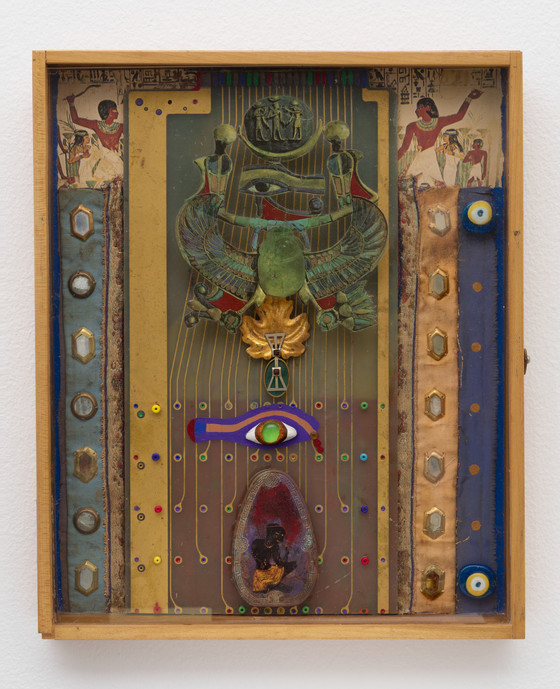Betye Saar’s work, which consistently addresses issues of spirituality, race, and gender, takes the form of highly personal assemblages of found materials that are steeped in cultures from around the ...
Betye Saar’s work, which consistently addresses issues of spirituality, race, and gender, takes the form of highly personal assemblages of found materials that are steeped in cultures from around the globe. A part of the strong assemblage tradition of southern California, Saar’s work combines many different symbols along with objects found on her travels across Africa, Mexico, Asia, Europe, and the Caribbean, as well as in L.A. itself (she is a connoisseur of the area’s flea markets and second-hand stores). Her sources and influences are as varied as Simon Rodia’s Watts Towers; Haitian Vodou; Australian Aboriginal paintings; Native American leatherwork; African American history, literature, and music; and Egyptian artifacts.
Essence of Egypt reflects not only Saar’s longstanding interest in the art and artifacts of many—especially non-western—cultures but also the “Tutmania” that resulted from the first exhibition, in 1972 at the British Museum, of the “Treasures of Tutankhamun,” considered the first “blockbuster” and still the most popular show in the British Museum’s history (with 1.7 million visitors). The show subsequently traveled to LACMA in 1978, where it attracted almost one million visitors. The top central portion of this assemblage—with the oval three-figure relief, the so-called Eye of Horus below, and the pale green scarab with falcon wings—is taken directly from a pectoral in the “Treasures of Tutankhamun” exhibition. There are numerous other Egyptian motifs in Essence of Egypt, including images borrowed directly from New Kingdom tomb wall paintings at the top left and right.
More...
